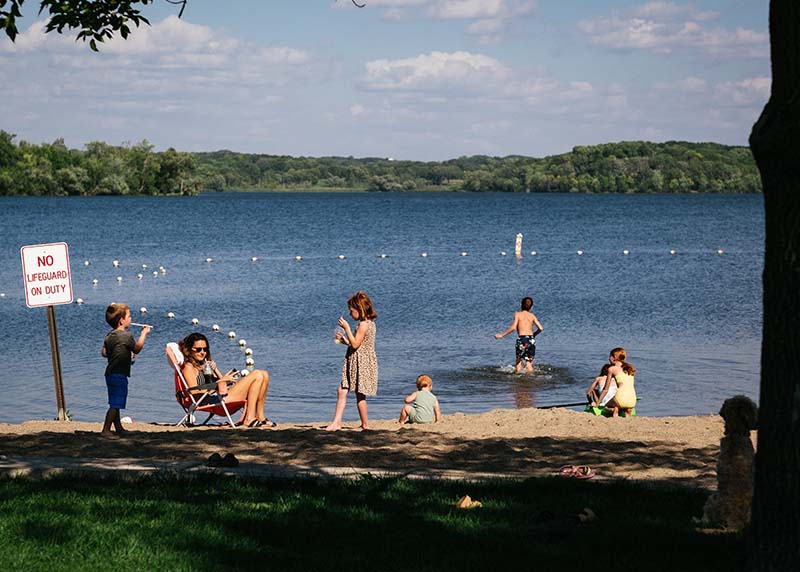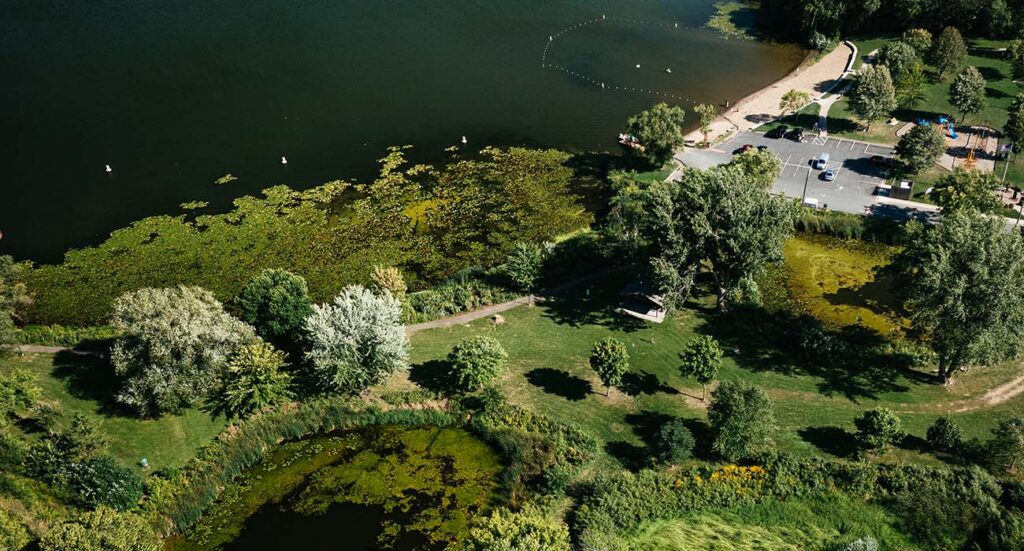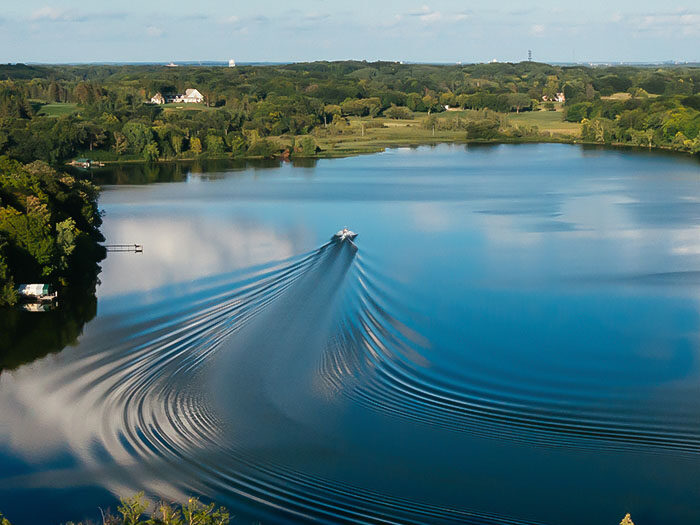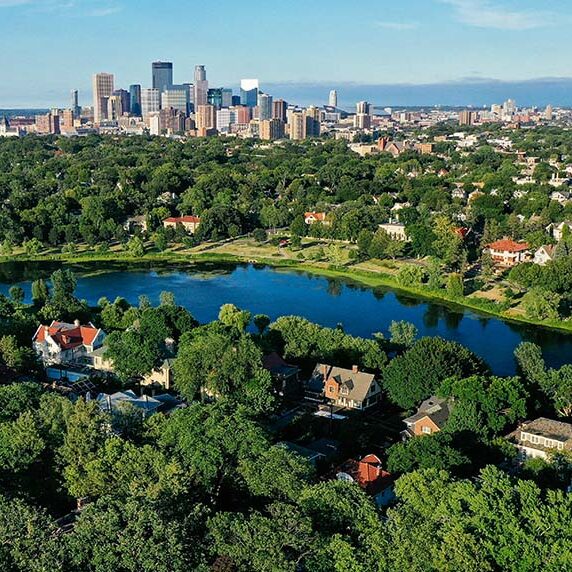
Long Lake Improvement Projects
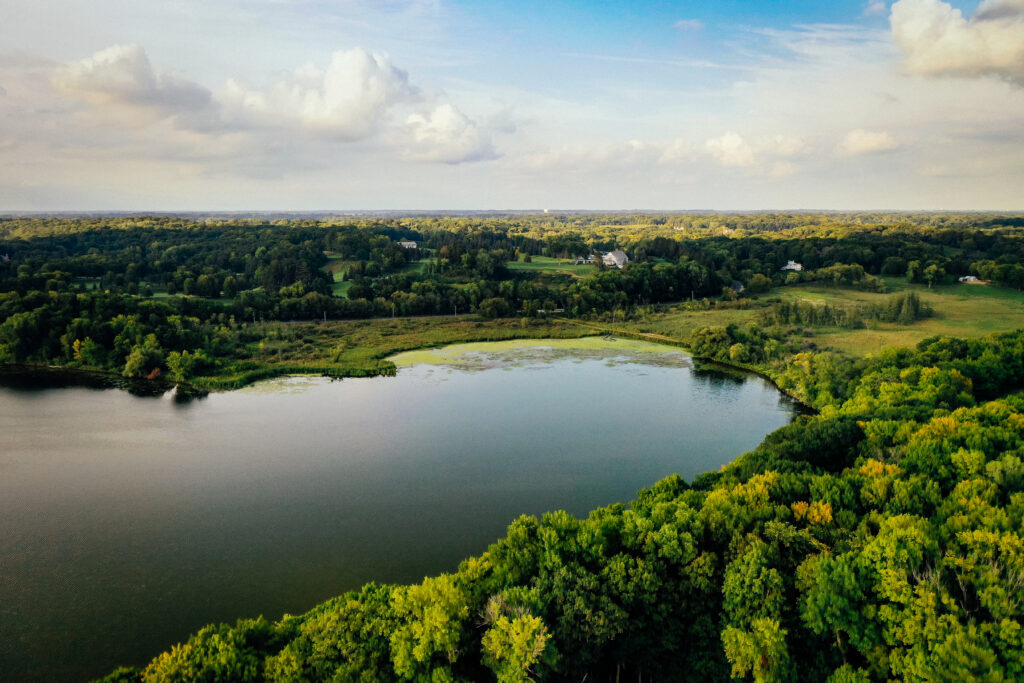
Overview
In the 1990s, Minnehaha Creek Watershed District (MCWD) oversaw the construction of wet detention basins, an alum treatment, and the enhancement of existing sedimentation basins to reduce the annual load of nutrients and sediments delivered to Long Lake. Two ponds were built to reduce the annual loading of nutrients and sediment delivered to Long Lake via runoff from the northern watershed. The alum treatment removed phosphorous from the water and improved the lake’s clarity by sealing the sediments. MCWD enhanced existing sedimentation basins in the city of Long Lake and Nelson Lakeside Park to reduce the load of nutrients and sediment to Long Lake from two major storm sewered subwatersheds. To complement this work, MCWD also restored shoreland vegetation on a section of Long Lake’s west shoreline in Nelson Lakeside Park.
In 1989, MCWD with assistance from the Minnesota Pollution Control Agency (MPCA), through a Clean Water Partnership (CWP) grant, conducted a diagnostic study of Long Lake that characterized and quantified the causes contributing to the decline in water quality in the lake, developed numerical water quality goals, and determined performance standards for a plan to improve water quality and achieve the desired goals. This study, done with the support of local municipalities, laid the foundation for the projects undertaken in the Long Lake area in the 1990s.
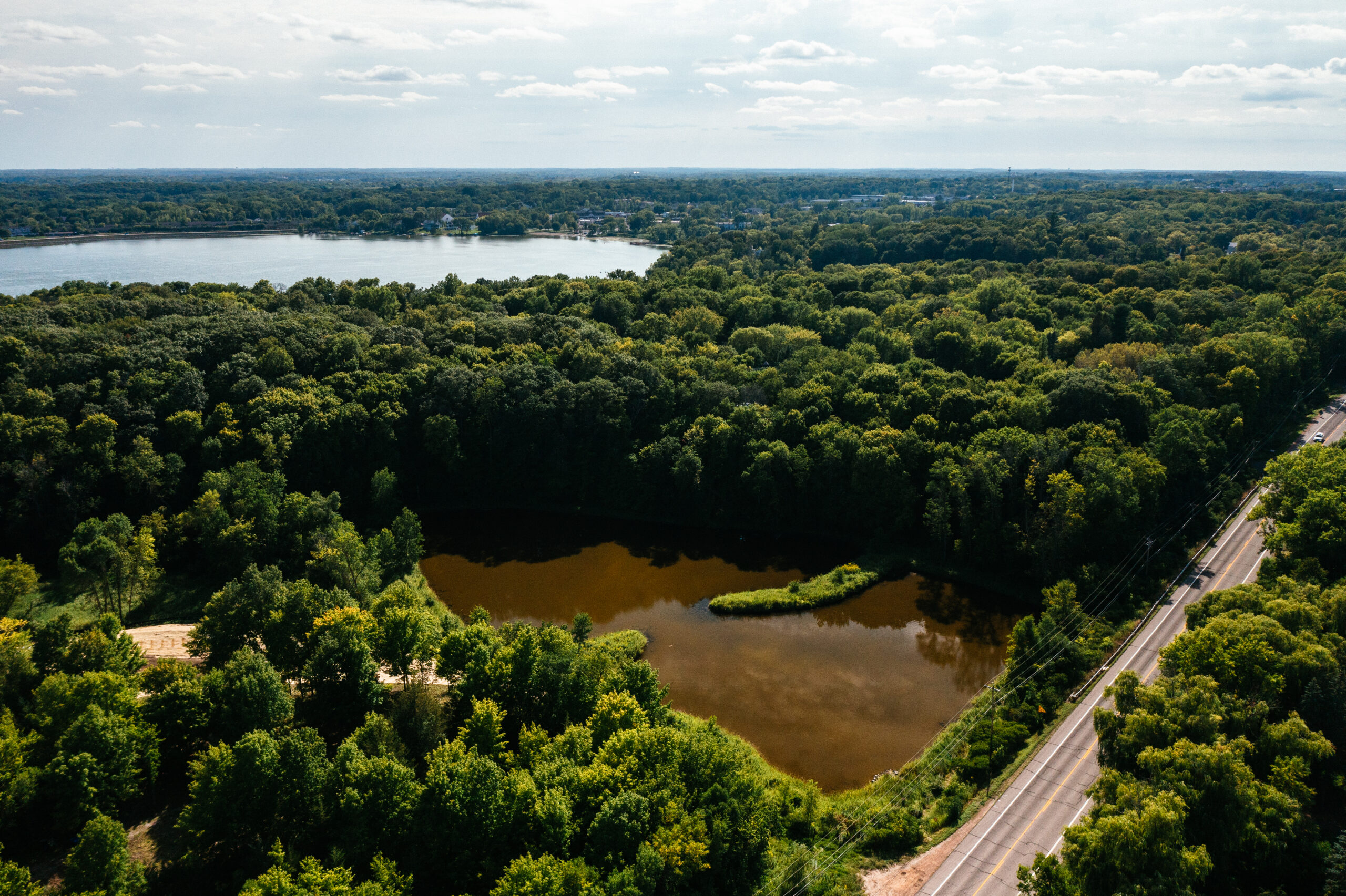
Project Updates
spring 2024
MCWD recently developed a draft roadmap to document additional project opportunities in the Long Lake Creek subwatershed. The Long Lake Creek Roadmap includes MCWD-led projects as well as potential projects for partners to pursue with District support.
One of the Roadmap projects is a retrofit of the County Road 6 Stormwater Pond near Orono. MCWD completed a feasibility study in 2023 to determine the potential design of the retrofit, and the Board of Managers will consider ordering the project this spring.
Project Timeline

Planning Phase
Planning Phase
1989 — Diagnostic study of Long Lake water quality conduced
October 1991 — Draft feasibility study produced
October 1993 — Planning phase completed

Design Phase
Design Phase
December 1993 — Design phase begins
May 1995 — Final design report completed

Construction Phase
Construction Phase
June 1996 — Alum treatment conducted on Long Lake
Fall 1995 — Construction of wet detention and sedimentation basins started
Winter 1996 — Construction of wet detention and sedimentation basins completed
Winter 1998 — Wetland constructed
1999 — Shoreline restoration completed

Project completion
Project Completion
1999 — Project completed
By the Numbers
181
acres
treated with Alum
50
percent
of phosphorus removed by two detention basins
20
percent
of phosphorus removed by City park detention basin
2.4
acres
of upland and wetland habitat provided
Project Highlights
- Two wetland detention ponds
- Alum treatment
- Sedimentation basins
- Shoreline restoration
Partnership
MCWD partnered with local municipalities, including the Cities of Medina, Orono, and Long Lake to conduct the studies associated with this project.
Funding
Project Cost: $2,200,000
The MPCA’s Clean Water Partnership grant supplied funding for the diagnostic study. MCWD provided funding through its levy for the remaining project costs.

